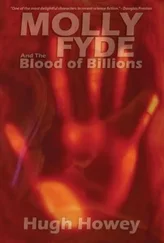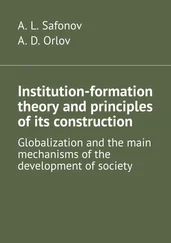The city of Zenith, it seems, standardises all the beauty out of life, and generally speaking, the novel certainly does not make a case for standardisation. However, according to the character of Seneca Doane, a radical lawyer, much of Europe is equally standardised as the United States, and there is nothing wrong with some aspects of standardisation, as long as it does not affect thought and opinion. Especially the architectural standardisation of suburbia can trigger feelings of home, of homesickness and nostalgia, and it is thus to be welcomed to some extent. Doane remembers once being in London and seeing an image of an American suburb, a toothpaste advertisement in the Sunday Evening Post depicting “an elm-lined snowy street of these new houses, Georgian some of ‘em, or with low raking roofs and – The kind of street you’d find here in Zenith, say in Floral Heights. Open. Trees. Grass.” He reminisces about how seeing this image made him homesick back then, and he insists that “[t]here’s no other country in the world that has such pleasant houses. And I don’t care if they are standardized. It’s a corking standard!” (100-101). Standardisation, after all, means recognisability and identifiability. It makes people feel at home in foreign places, and it enables them to bond beyond their social set and geographical location. American suburbia is a place that is particularly prone to being the subject of sentimental associations of this kind. This is not only due to the standardisation of this environment, but also to the type of standard achieved, as well as to the distinctive suburban character that emerges from this process. What is at stake is a certain sentimentality for the past, a sentimentality for the idea of home, and a sentimentality for the notion of familiarity.
Despite the people of Zenith being aware of the fact that they live in a standardised environment, and that they are standardised individuals themselves, they take pride in this, mostly because they perceive their standard to be in a state of perfection. Giving the annual address at the Zenith Real Estate Board, Babbitt talks about how “the fellow with four to ten thousand a year […] and an automobile and a nice little family and a bungalow on the edge of town […] makes the wheels of progress go round.” He is the “Ideal Citizen” (181); in other words, he is the average suburbanite. Babbitt is convinced that this idealised man rules America, and that he should stand as an example to the rest of the world.
In his speech, what Babbitt calls the “Ideal Citizen” he later calls the “Sane Citizen,” and then the “Standardized Citizen” (182); the citizen that saves America from going down the same path as the decayed nations of the Old World. Most importantly, Babbitt is convinced that Zenith is the place in the United States where this citizen is produced. He argues that “Zenith and her sister-cities are producing a new type of civilization. […] The extraordinary, growing, and sane standardization of stores, offices, streets, hotels, clothes, and newspapers throughout the United States shows how strong and enduring a type is ours” (184). Babbitt does not see the standardised citizen as a highly dignified character. The standardised citizen is a regular man who excels in being exactly that. This homogenised regularity in people then finds its reflection in the built environment, as seen in the quotation above. The standardisation of built spaces is perceived as sane; it is a sign of strength and endurance, a belief in a defining ideal. As a consequence, the desired and thus fully intentional monotony of architecture and urban planning is a side effect of the social standardisation of the United States, but at the same time, it reinforces this process and has tremendous repercussions on the homogenisation of the public.
Given the emphasis on the male citizen above, it needs pointing out that the standardisation encountered in the urban environment of Zenith and the suburban environment of Floral Heights is concerned predominantly with the male perspective. In Babbitt , the standardisation of the built and the material environment results from the amount of money the industrious suburban male earns, that is, it results from the standard that can be afforded. The more money a woman’s husband earns, the less reputable it is for her to work outside the house, and the more she is subjected to the standard offered by her husband in the domestic sphere. Women are forced into domesticity, with the suburban house being their “proper sphere,” and are charged with the task of maintaining and furnishing the house according to the suburban standard.3 The process of being pushed into the house by conventions and by their husbands to such an extent even results in Babbitt accepting his wife as “a comparatively movable part of the furniture” (351).
Architecture, Place and Social Belonging
Escaping architectural conventions and standardisation, as well as the social circle that defines them, is not an easy feat, especially in a novel in which architecture and location are such strong reflections of belonging. As a case in point, Babbitt is a member of the upper-middle-class Athletic Club, and due to his social rank, he is denied access to the upper-class Union Club. Similarly, despite his social rise as an orator, he is never a guest at the extravagant dances at the houses in Royal Ridge; the residents of Royal Ridge do not want to see the residents of Floral Heights in their houses, and they do not want to be seen in the houses of Floral Heights. Babbitt’s Royal Ridge acquaintances, the McKelveys, only reluctantly accept his dinner invitation because they see a commercial opportunity in it, and unsurprisingly, it is with the same hesitation that Babbitt accepts a dinner invitation from the Overbrooks in the less classy suburb of Dorchester. Ed Overbrook is a failed former classmate of Babbitt’s and lives far below the standards of Floral Heights. The Overbrook house is described as a depressing sight, a wooden, not very orderly two-family dwelling that smells of cabbage, the poor man’s food. The Babbitts leave the dinner at the first opportunity, and in the same manner that they failed to receive a return invitation from the high society in Royal Ridge, they deny this opportunity to the Overbrooks. These two examples demonstrate to what extent not only social standing, but also geographical location, architecture and interior design separate people from one another. Being invited into a house above one’s standards is a sign of being accepted into a higher social circle, and both the Babbitts and the Overbrooks fail at their attempts.
It is perhaps this painful experience that prompts Babbitt to try his luck within the boundaries of Floral Heights and be accepted into one of the majestic houses of the old aristocracy, as this would allow him to disregard the problem of crossing geographical or topographical boundaries. The person Babbitt hopes will help him climb the social ladder is William Washington Eathorne, a banker and member of Zenith’s oldest and richest family who lives in the largest of the four old houses in Floral Heights – with “old” meaning built before 1880. His mansion is allotted a lengthy description, pointing towards its aesthetic and symbolic importance within the suburban neighbourhood.
The Eathorne Mansion is described as a remnant of the beautiful parts of Zenith, and it preserves the aesthetic memory of the suburb of Floral Heights between 1860 and 1900. Architecturally, the mansion is an immensity of red brick with grey sandstone lintels; it has a roof of slate in sequences of red, green and dyspeptic yellow; it features two towers, one with a roof of copper, and the other topped with cast-iron ferns; the porch is described as resembling an open tomb supported by short and thick granite columns, with brick hanging above them in frozen cascades; and one side of the mansion displays an enormous stained-glass window shaped like a keyhole. Despite its impressive architecture, however, the overall effect of the mansion is rather stern, as it embodies the dignity of the previously ruling Victorian financiers who created an oligarchy through being in control of, for instance, banks, mines and railroads. As a result, out of the numerous contradictory Zeniths which come together to shape the actual and complete Zenith, there is none so influential, controlling and enduring, but also so unfamiliar as the small, polite and cruel version of Zenith as represented by the William Eathornes, “and for that tiny hierarchy the other Zeniths unwittingly labor and insignificantly die” (213). The narrator observes that the majority of the castles owned by the Victorian tetrarchs have disappeared or have been downgraded to boarding houses, yet the Eathorne Mansion still stands virtuous and aloof, with its marble steps and brass plate meticulously maintained.
Читать дальше











